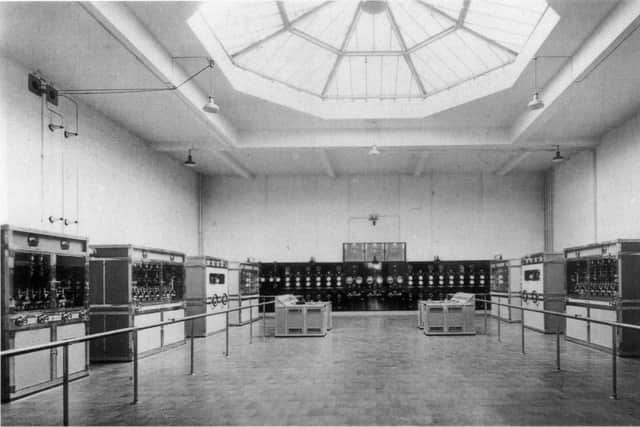Falkirk nostalgia: Westerglen has kept us tuned in for nearly a century
and live on Freeview channel 276
Back in the ’50s we sat around the box with its glowing glass valves to ‘Listen with Mother’ – “Are you all sitting comfortably? Then I’ll begin”. ‘Children’s Hour’ was unmissable with Auntie Kathleen and the great Willie Joss reading the regular tales of ‘Tammy Troot’. Later it would be ‘Dick Barton Special Agent’, or a cop show like ‘PC 49’ or ‘Journey into Space’.
Mum tuned into ‘Mrs Dale’s Diary’, ‘Family Favourites’ or ‘Have a go with Wilfred Pickles’, while Dad preferred ‘Workers Playtime’ or ITMA (It’s That Man Again) with comedian Tommy Handley. All the family gathered round the set on a Saturday to enjoy the adventures of the McFlannel family, a kind of radio version of the Broons. There were three stations: the Home Service (a bit like Radio 4), the Light Programme with comedy and music and the rather highbrow Third Programme. I was hooked then and am still a devoted listener.Today I follow BBC Radio 4, Radio Scotland and Five Live which are all relayed to me by the Westerglen transmitter which has been operating since 1932 and whose huge masts with their array of red lights guide Falkirk folk home in the dark just as surely as any famous lighthouse.
Advertisement
Hide AdAdvertisement
Hide AdThe British Broadcasting Company began operations in 1921 and the following year the Scottish operation got underway. The rather weak signals available to listeners north of the border led to the idea of a new transmitter and the Westerglen site, 500 feet above the Forth Valley, was ideal. It would not only broadcast the existing stations but also inspire new programme makers to reflect the country and its culture. Announcing the impending arrival of Westerglen the Radio Times said “The far corners of our rugged country contain much fine broadcasting material in the shape of country singers, speakers, raconteurs and other rustic entertainers”.


By the time the building with all its complex machinery was operational in June 1932 it had cost a cool £200,000. Initially there were two huge 500 foot masts increased over the years by two more. Today the station is unmanned but when it opened it was staffed by 40 engineers and support workers. Each day a BBC bus would pick up the Westerglen workers and take them up the road to the station; back in the town centre there was a Westerglen social club which prospered for many years.
I came across a website yesterday which has a series of photographs taken by a man called Gilbert Pollock who worked at Westerglen in the 1940s and who later had an electrical supply shop opposite the steeple. His pictures show an array of complicated electrical machinery including four diesel engines driving generators which powered the transmitter and beamed the signals up to 80 miles across central Scotland.
The BBC name has long gone from Westerglen and today the station is run by a giant firm called Arqiva who own and operate most TV and radio transmitters these days. I am not really bothered who they are as long as they keep on sending me my favourites. Every now and then they talk about switching things off but so far I can still tune in and I hope it stays that way.